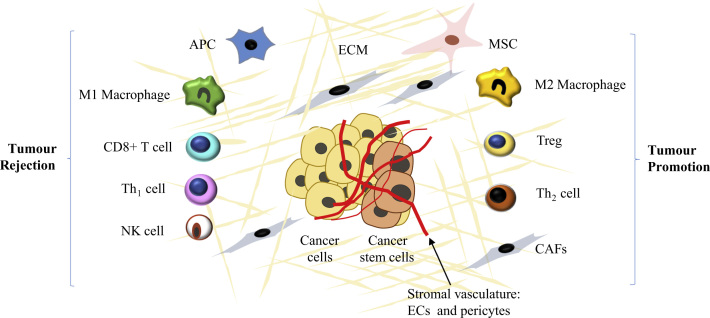Solid tumours comprise, not only malignant cells but also a variety of stromal cells and extracellular matrix proteins. These components interact via an array of signalling pathways to create an adaptable network that may act to promote or suppress cancer progression. To date, the majority of anti-tumour chemotherapeutic agents have principally sought to target the cancer cell. Consequently, resistance develops because of clonal evolution, as a result of selection pressure during tumour expansion. The concept of activating or inhibiting other cell types within the tumour microenvironment is relatively novel and has the advantage of targeting cells which are genetically stable and less likely to develop resistance. This review outlines key players in the stromal tumour microenvironment and discusses potential targeting strategies that may offer therapeutic benefit.
Benchside
○ The tumour stroma consists of mesenchymal, immune and vascular cells housed in an extracellular matrix. Stromal cells and extracellular matrix proteins represent genetically stable targets which can be exploited in cancer treatment. Numerous in vitro and animal studies support the concept of stromal-directed treatment.
Bedside
○ Several therapeutic strategies have been developed or repurposed to target the stroma. The anti-angiogenic agent bevacizumab was one of the first specific stromal-targeting agents to be licensed for cancer treatment over a decade ago. More recently, immune modulation of the stroma has become a hugely successful strategy, with novel drugs such as checkpoint inhibitors set to revolutionise cancer treatment.
Governments
○ Funding bodies should continue to acknowledge the pivotal role that the stroma plays in cancer progression, in parallel with cancer cell itself. Undoubtedly, the most successful treatment regimens of the future will address both the “seed” and the “soil”.


